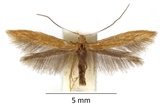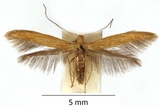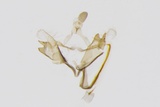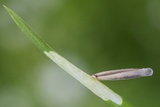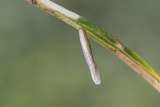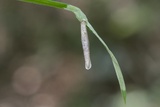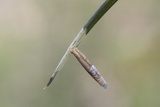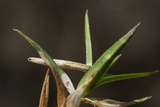Coleophora solitariella Zeller, 1849 Species
Last modified: Nov. 28, 2025, 1:58 p.m.
A rare species throughout Belgium, more distributed in the northern part of the country.
Details
- Classification
- Family: Coleophoridae > Genus: Coleophora > Species: Coleophora solitariella
- Vernacular names
- Oranje muurkokermot (NL), Ochreous case-bearer (EN)
- First mention in Belgium
- Fologne E. 1860. Lépidoptères et chenilles observés en Belgique. — Annales de la Société entomologique belge 4: 108–112. On page 111 (as Coleophora Solitariella. Z.). view page
- Status
-
Native
Distribution
Case
Full grown larvae live in a slender greyish white three-valved tubular silken case of 8 mm.
The mouth angle is about 45°.
See also bladmineerders.be.
Mine
The larva, while feeding, creates little white fleck mines.
Bionomics
The eggs are laid on the upper side of the food plant.
Full grown cases in May.
Often several cases together on a small number of plants.
Pupation in the case attached to a stem of the food plant, vegetation or tree trunks.
It has not yet been recorded at light.
Flight periods
The adults fly in one generation a year from late May till the end of July.
Observed on
- Host plant (species):
- Stellaria holostea
- Host plant (genera):
- Stellaria and Cerastium
In Belgium, the larva feeds preferably on Stellaria holostea.
